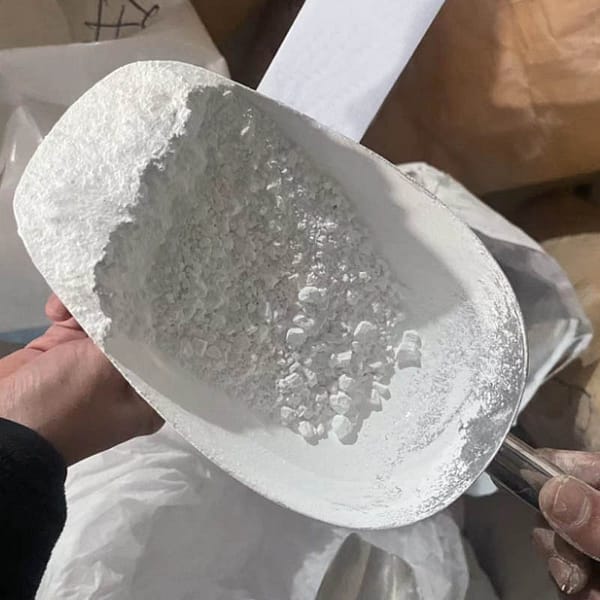Titanium dioxide (also called TiO2, white titanium or Pigment White 6 – PW6)) is a major component in many industries. It’s particularly prevalent in paints, rubber, plastics, and paper. The versatile chemical with its brilliant white pigment plays a vital role in transforming raw materials into vibrant, finished goods. We will explore the wonders and applications of titanium oxide, along with its manufacturing method, to discover how it impacts the various industries.
The Canvas of Titanium Dioxide, A Palette of Possibilities
Titanium dioxide is an important element in the manufacturing of many products, which contributes to the aesthetic appeal and function of items we encounter daily. As Pigment White 6, it is a key player in the creation of paints. It provides the most brilliant and opaque white color that improves the radiance and coverage of industrial and artistic designs alike.

In the field of plastics titanium dioxide not only gives color, it can also function as a UV stabilizer protecting against the harmful effects induced by ultraviolet radiation. Because of its dual function it is an essential ingredient in an array of plastic products ranging from sturdy outdoor items to packaging materials.
The Manufacturing Alchemy of Titanium Dioxide Production Processes
Two processes dominate the production of titanium oxide: the sulfuric-acid method and the chlorination-acid method. Each method is distinctive and can be used in different ways. This has contributed to the versatility of titanium dioxide for various industries.
Sulfuric Acid Method. This involves the reaction of the ore that contains titanium with sulfuric acid, resulting in a titanium sulfate. The solution is hydrolyzed into hydrated titanium oxide. The result after the calcination process is a white powder that can be used in numerous applications, particularly the paint and paper industries.
The Chlorination Method: contrast, the chlorination method employs chlorine gas to mix with titanium-bearing ores to create titanium tetrachloride. Through a series of chemical transformations and reactions, titanium tetrachloride can be oxidized to create pure titanium dioxide. This method is prominent in the production of titanium dioxide for the plastics and rubber industries.
Titanium Dioxide Applications: Art and Science
Painting brilliance Across Industries: Titanium dioxide’s prominence in the paint industry is unparalleled. Its ability to produce a brilliant white color along with outstanding coverage and long-lasting toughness makes it a top choice for homeowners, artists, and industrial applications alike. The brightness it adds to the canvas is not only visually appealing, but also practical, improving the durability of painted surfaces.
Making plastics sparkle with radiant luster: In plastics titanium dioxide has as a dual function. Beyond its role as a white pigment it also functions as an UV stabilizer that provides important protection against the degrading impacts of sunlight. This makes titanium dioxide an essential element in the manufacture of outdoor plastics and ensures that they retain their structural strength and aesthetic appeal through time.
Opacity and Whiteness of Paper: In the paper industry, titanium dioxide contributes to the whiteness and transparency of paper products. The addition of titanium dioxide enhances the quality of the paper and makes the printed material more vivid and readable. The function of titanium dioxide in the papermaking process is more than aesthetics. It’s crucial in making printed material.
Rubber Resilience and UV Resistance: The rubber industry gains from the UV resistance that titanium dioxide gives. In the rubber industry, particularly those that are exposed outdoors, titanium dioxide acts as a protection against harmful effects of UV radiation, which ensures the durability and performance of rubber-based items.
Beyond Pigment Beyond Pigment: Titanium Dioxide’s Invisible Effect
While the impact of titanium dioxide is very evident in its use as a pigment, its influence extends far beyond color. Due to its capability to improve the durability, resistance and endurance of materials across various industries it is a non-visible but essential contributor to quality and functionality.
In the end it is clear that titanium dioxide is a significant substance that seamlessly integrates into the fabric of many industries. Pigment White 6 is a pigment that gives a radiant look to canvasses of all kinds that are industrial or artistic. The dual processes of sulfuric acid and chlorination expose the alchemy that drives its creation, and provide that it can be used in a variety of ways. Whether enhancing the visual allure of paints, protecting plastics from UV rays improving the brightness of paper, or protecting rubber, titanium dioxide is regarded as a proof of the harmony of art and science in the field of manufacturing. The brightness of titanium dioxide reflects light onto the world and transforms the appearance of a myriad of items into those that last and brilliant.